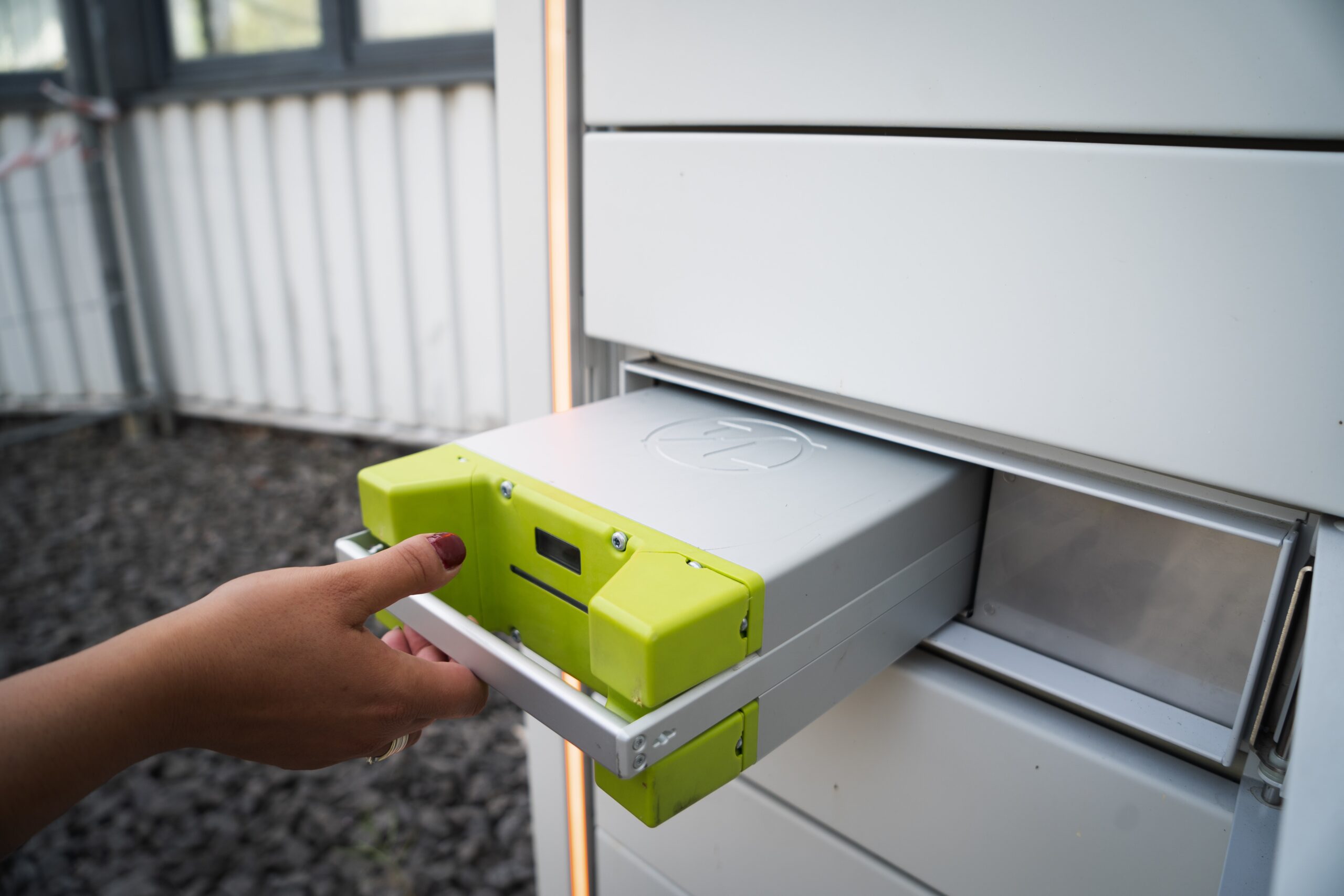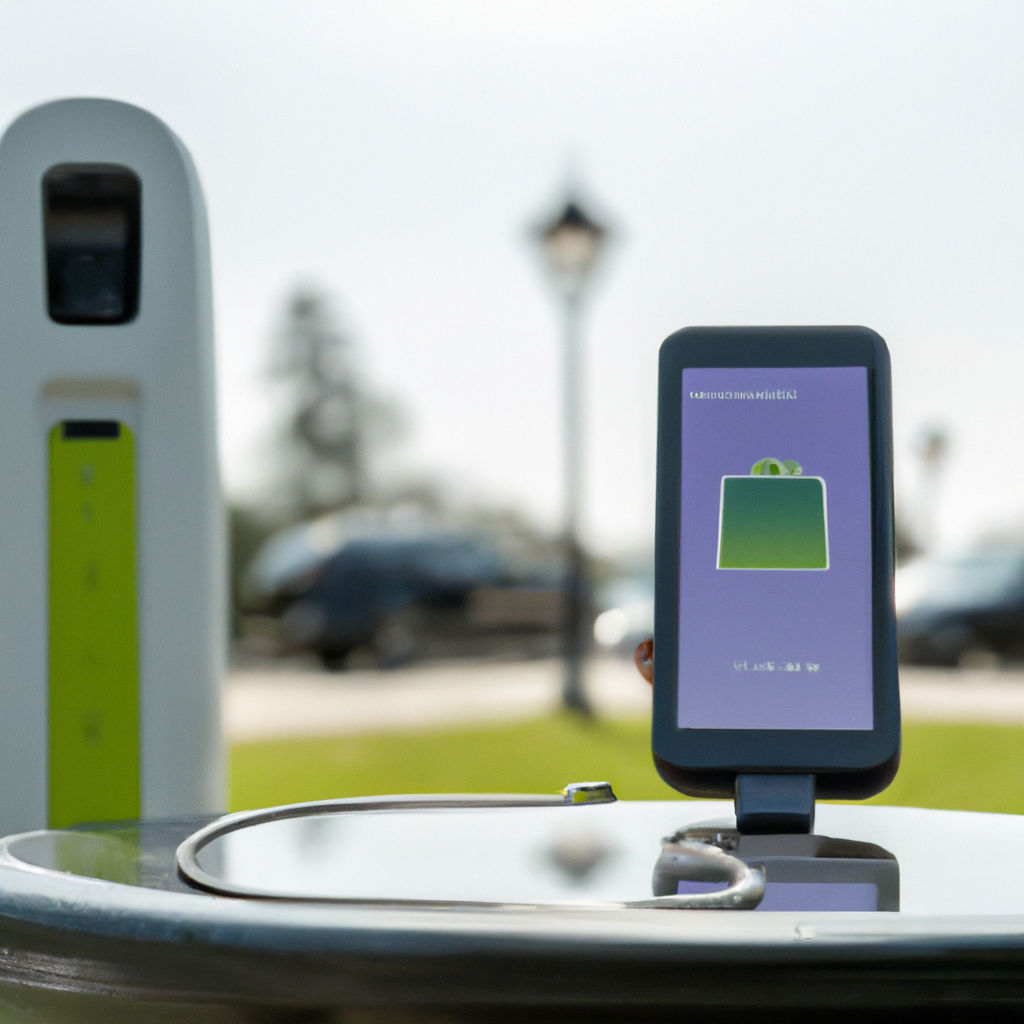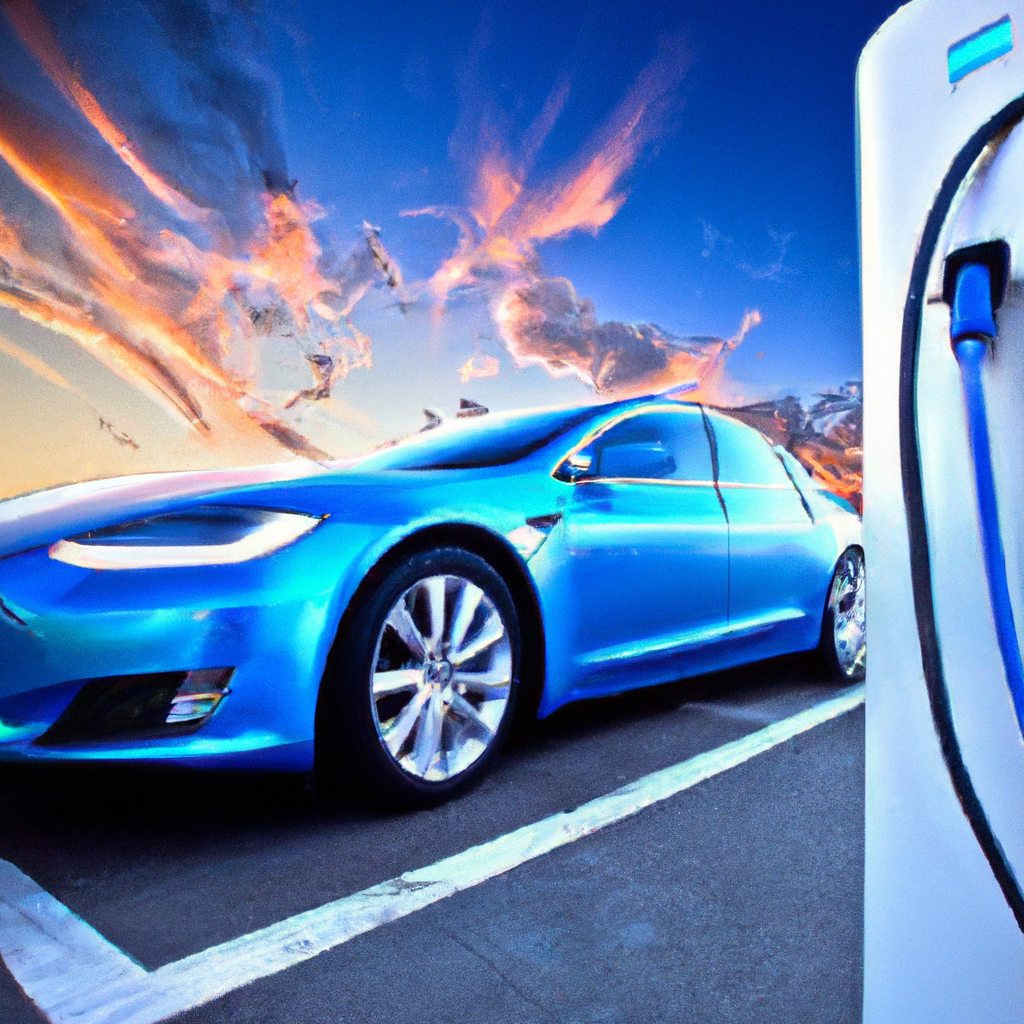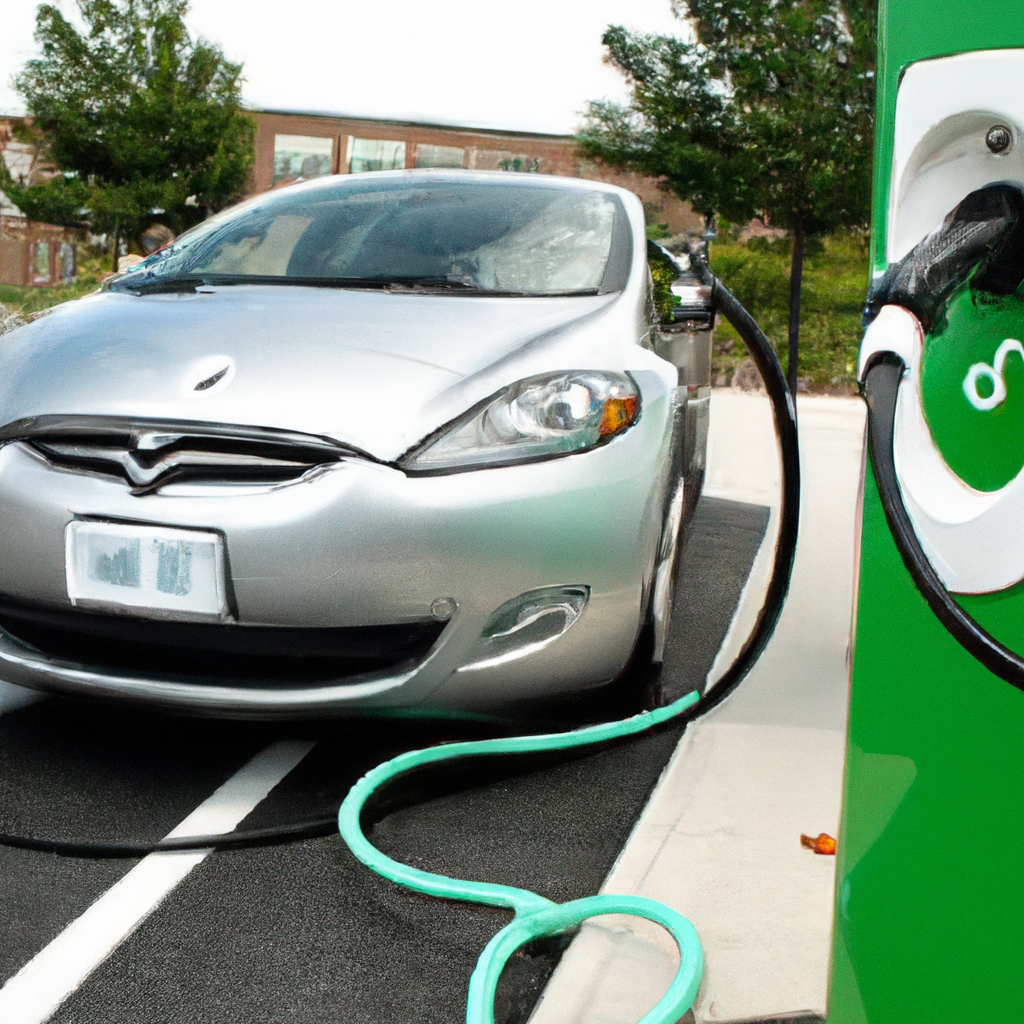The Future Of EV Charging: Wireless And Ultra-Fast Technologies
October 17, 2023 | by Jacob Kang

Imagine a world where you never have to worry about searching for a charging station for your electric vehicle (EV) ever again. A world where charging your car is as simple as parking it in your garage or driveway. This may sound like a distant dream, but with the advent of wireless and ultra-fast charging technologies, it may soon become a reality. In this article, we will explore the future of EV charging and how these innovative technologies are set to revolutionize the way we power our vehicles. From wireless charging pads embedded in roads to ultra-fast chargers capable of refueling your car in a matter of minutes, the future of EV charging is brighter than ever before. So, grab a cup of coffee, sit back, and get ready to embark on a journey into the exciting world of wireless and ultra-fast charging technologies.
Wireless Charging
How Wireless Charging Works
Wireless charging, also known as inductive charging, is a convenient and futuristic way to power up your electronic devices without the need for traditional wires and connectors. The principle behind wireless charging is based on electromagnetic induction. When you place your device, such as a smartphone or electric vehicle (EV), on a wireless charging pad or station, an electromagnetic field is created which transfers energy from the charging station to the device’s battery.
Benefits of Wireless Charging
Wireless charging offers several benefits that make it an attractive alternative to traditional wired charging methods. One of the key advantages is the convenience it provides. With wireless charging, you don’t need to fumble with charging cables or worry about damaged charging ports. You simply place your device on the charging pad, and it starts charging automatically. This seamless experience is particularly advantageous for electric vehicle owners, as they can park over charging pads and have their car recharge without any hassle.
Another benefit of wireless charging is the reduction in wear and tear on charging cables. Traditional charging cables are prone to fraying and damage due to constant plugging and unplugging. By eliminating the need for cables, wireless charging helps extend the lifespan of charging equipment, reducing the need for replacements.
Moreover, wireless charging promotes a clutter-free environment by eliminating tangled wires and cables. This not only improves the overall aesthetics but also enhances safety by reducing tripping hazards. Additionally, wireless charging pads can be integrated into various everyday objects, such as furniture, creating a seamless charging experience that blends harmoniously with your surroundings.
Current State of Wireless Charging
Wireless charging technology has made significant progress in recent years, and its adoption continues to grow. Many smartphones now come with built-in wireless charging capabilities, and electric vehicle manufacturers are increasingly offering wireless charging options. However, the widespread adoption of wireless charging is still hindered by compatibility issues and slower charging speeds compared to traditional wired methods.
To address these challenges, industry leaders are investing in research and development to improve wireless charging efficiency and compatibility. Major technological advancements, such as resonant charging and magnetic resonance coupling, are paving the way for faster and more reliable wireless charging options. As the technology continues to evolve, we can expect wireless charging to become more prevalent and accessible in the near future.
Ultra-Fast Charging
Overview of Ultra-Fast Charging
Ultra-fast charging, also referred to as high-power charging, is a rapidly emerging technology that aims to significantly reduce the charging time for electric vehicles. Unlike traditional charging methods that can take hours to fully charge an EV battery, ultra-fast charging solutions leverage high-power charging stations to dramatically decrease the charging time.
Advantages of Ultra-Fast Charging
The main advantage of ultra-fast charging is the ability to quickly recharge electric vehicle batteries, providing significant time savings for EV owners. With ultra-fast charging, you can add a considerable amount of range to your electric vehicle in just a matter of minutes, making long-distance travel more feasible and convenient. This eliminates range anxiety, one of the key concerns for potential EV owners, as it allows for more frequent and efficient charging opportunities.
Another advantage of ultra-fast charging is the potential to reduce the overall number of charging stations required. Since the charging time is significantly shorter, electric vehicles can occupy charging stations for shorter durations, increasing the turnover rate and reducing congestion at charging facilities. This scalability can help accelerate the widespread adoption of electric vehicles by alleviating concerns about charging infrastructure capacity.
Current Progress in Ultra-Fast Charging
The ultra-fast charging technology is still in its early stages, but significant progress has already been made. Automakers and charging infrastructure providers are actively working on deploying high-power charging networks to support ultra-fast charging capabilities. These networks feature charging stations with power outputs ranging from 150 kW to over 350 kW, enabling EVs to achieve rapid charging rates.
Companies like Tesla, Electrify America, and Ionity are leading the way in building extensive ultra-fast charging networks, with thousands of charging stations already installed worldwide. These charging networks are strategically located along major highways and in urban areas, allowing for seamless long-distance travel and easy access to charging infrastructure.
Obstacles to Overcome
Despite the promising advancements in ultra-fast charging technology, there are still obstacles to overcome before it can become universally accessible. One of the primary challenges is the cost of deploying high-power charging infrastructure. Building and maintaining ultra-fast charging networks require significant investments in both hardware and energy supply infrastructure. Collaborative efforts from government entities, private companies, and the energy sector are crucial to accelerate the deployment of ultra-fast charging infrastructure.
Another obstacle is the need for standardized charging protocols and connectors to ensure compatibility between different electric vehicle models and manufacturers. Currently, there is a lack of standardized ultra-fast charging systems, leading to fragmentation and limited interoperability. The establishment of industry-wide standards will be essential to ensure seamless connectivity and convenience for all EV owners.
Furthermore, ultra-fast charging places higher demands on the power grid, requiring upgrades and optimizations to existing electrical infrastructure. Balancing the increased demand from high-power charging stations with grid stability and reliability is an ongoing challenge that requires careful coordination between charging network operators, utilities, and grid operators.

Wireless vs. Wired Charging
Comparison of Wireless and Wired Charging
Wireless charging and wired charging methods each have their own advantages and considerations. Understanding the differences between the two can help you make an informed decision when it comes to charging your electronic devices or electric vehicles.
Wired charging, also known as corded charging, involves physically connecting your device to a power source using a cable. This method is widely available and provides reliable and fast charging speeds. Most wired charging solutions offer higher power outputs, allowing for quicker recharges compared to wireless charging. Moreover, wired charging offers universal compatibility since most devices utilize standard charging ports such as USB.
On the other hand, wireless charging offers the convenience of cord-free charging. With wireless charging, you simply place your device on a charging pad or station, eliminating the need for cables and connectors. This seamless experience is particularly appealing for electric vehicle owners, as they can park their cars over charging pads and have their vehicles recharge automatically.
Efficiency and Range Considerations
When it comes to charging efficiency, wired charging is generally more efficient than wireless charging. In a wired charging setup, the energy transfer occurs directly from the power source to the device through the cable, resulting in minimal power losses. However, wireless charging involves the conversion of energy from the charging station to an electromagnetic field, followed by the conversion back to electrical energy in the device’s battery. These conversions lead to some energy loss and slightly lower efficiency compared to wired charging.
In terms of charging range, wired charging typically offers higher power outputs, enabling faster charging rates. This is particularly important for electric vehicles, as longer charging times can limit their overall range. However, as wireless charging technology advances, ultra-fast wireless charging solutions are being developed to reduce charging times and close the gap between wired and wireless charging speeds.
Infrastructure Requirements
Wired charging infrastructure is well-established, with charging stations available in various locations such as homes, offices, and public spaces. These charging stations require a power source and suitable connectors or cables for charging devices. The widespread availability of wired charging infrastructure makes it a reliable and accessible option for most charging needs.
Wireless charging infrastructure, on the other hand, is still developing. While wireless charging pads and stations are becoming increasingly common, the deployment of wireless charging infrastructure for electric vehicles is not as widespread as wired charging stations. However, as demand for wireless charging grows, we can expect an expansion of wireless charging infrastructure in the coming years.
User Convenience
User convenience is one of the key advantages of wireless charging. The ability to simply place your device on a charging pad and have it start charging automatically eliminates the hassle of dealing with cables and connectors. Wireless charging can seamlessly integrate into everyday objects such as furniture, allowing for a clutter-free charging experience.
Wired charging, although reliable and efficient, requires the physical connection of a cable to the device. This can be inconvenient, especially when dealing with multiple devices or when the charging port is difficult to access. However, wired charging offers the flexibility of movement while charging, allowing you to use your device while it charges.
Ultimately, the choice between wireless and wired charging depends on individual preferences and specific charging needs. While wireless charging offers convenience and eliminates the need for cables, wired charging remains a reliable and efficient option for faster charging speeds and broader compatibility with devices.
Technologies Driving the Future of EV Charging
Inductive Charging
Inductive charging is the most common wireless charging technology used in consumer electronics and electric vehicles. It works by creating an electromagnetic field between a charging pad or station and a receiving coil in the device. When the device is placed on the charging pad, the electromagnetic field induces an electric current in the receiving coil, which charges the device’s battery. Inductive charging is already widely adopted in smartphones and offers convenience and simplicity in charging.
Resonant Charging
Resonant charging is an advanced wireless charging technology that allows for greater charging distances and efficiency. Unlike inductive charging, which requires close proximity between the charging pad and the device, resonant charging can transfer power over longer distances. This technology utilizes resonant magnetic fields that oscillate at specific frequencies to transfer energy between the charging pad and the device. Resonant charging has the potential to revolutionize the charging experience by enabling wireless charging through surfaces, such as countertops or automotive roads.
Magnetic Resonance Coupling
Magnetic resonance coupling is a wireless charging technology that combines elements of both inductive and resonant charging. It utilizes a system of coils in both the charging pad and the device to create a strong magnetic field. This magnetic field couples the two coils together, allowing for efficient power transfer over short distances. Magnetic resonance coupling offers high power levels and fast charging speeds, making it suitable for large devices like electric vehicles.
Vehicle-to-Grid Integration
Vehicle-to-grid (V2G) integration is an innovative concept that leverages electric vehicles as energy storage systems and bidirectional power sources. It enables electric vehicles to not only charge from the power grid but also provide electricity back to the grid when needed. By utilizing the stored energy in EV batteries during peak demand periods, V2G integration can help stabilize the power grid and optimize energy usage. This technology has the potential to transform electric vehicles into mobile power sources and revolutionize the way energy is managed and distributed.

The Role of Smart Grids in EV Charging
Integration of EV Charging with Smart Grids
Smart grids play a vital role in the integration and optimization of electric vehicle charging. Smart grids are modern electricity grids that leverage advanced communication and control technologies to improve overall grid efficiency and reliability. By integrating EV charging infrastructure with smart grids, electric vehicle owners and grid operators can benefit from enhanced control and management capabilities.
Smart grid integration allows for real-time communication between charging stations, electric vehicles, and the grid infrastructure. This enables dynamic load balancing, demand response programs, and grid optimization for efficient and sustainable charging. By coordinating charging schedules and adjusting charging rates based on grid conditions, smart grids help prevent overloading, maximize renewable energy utilization, and ensure grid stability.
Balancing Supply and Demand
Electric vehicle charging can create significant demand peaks that strain the power grid during peak hours. Smart grids can address this challenge by implementing load management strategies. Load management involves dynamically adjusting the charging load based on grid conditions, energy availability, and demand. By actively balancing supply and demand, smart grids ensure a smoother integration of electric vehicle charging without negatively impacting the overall power grid.
Load management strategies can include implementing time-of-use pricing, where electricity prices vary based on peak and off-peak hours to incentivize charging during low-demand periods. Additionally, smart grids can prioritize and allocate charging resources based on factors such as renewable energy availability and grid load conditions. This coordination optimizes the charging process and supports a sustainable and efficient electric vehicle charging infrastructure.
Grid Optimization for EV Charging
Smart grids offer numerous optimization opportunities for electric vehicle charging. By leveraging advanced analytics and real-time data, smart grids can optimize the charging process based on various factors such as grid load, energy demand, and renewable energy availability. This optimization process helps reduce energy waste, minimize charging times, and maximize the use of renewable energy sources.
Grid optimization also involves determining the optimal locations for charging stations, considering factors such as population density, transportation patterns, and existing grid infrastructure. By strategically placing charging stations, grid operators can ensure widespread coverage and avoid straining specific grid areas. This planning helps create a reliable and accessible charging network for electric vehicle owners.
Benefits for Energy Providers and Consumers
The integration of EV charging with smart grids offers numerous benefits for both energy providers and consumers. For energy providers, smart grid integration allows for more efficient utilization of existing infrastructure and resources. By optimizing grid operations and load management, energy providers can reduce the need for costly grid upgrades while maintaining grid stability and reliability.
For consumers, smart grids enable access to advanced charging services and pricing options. With smart grid integration, consumers can take advantage of time-of-use pricing, where electricity rates are lower during off-peak hours, potentially reducing charging costs. Additionally, real-time data and analytics provided by smart grids allow consumers to track their energy consumption, optimize charging schedules, and make informed decisions to minimize costs and environmental impact.
The collaboration between electric vehicle owners, energy providers, and grid operators facilitated by smart grid integration is crucial for the successful and sustainable growth of the electric vehicle charging industry.
Impact of EV Charging on Local Power Grids
Load Management Strategies
The increasing adoption of electric vehicles has a significant impact on local power grids, particularly during peak charging periods. Load management strategies play a critical role in ensuring the reliable and efficient operation of the grid while accommodating the growing demand for electric vehicle charging.
Load management strategies involve implementing measures to control and balance the charging load on the grid. These strategies can include time-of-use pricing, which incentivizes electric vehicle owners to charge their vehicles during off-peak hours when demand on the grid is lower. By encouraging off-peak charging, load management strategies help distribute the charging load and prevent grid overload during peak hours.
Another load management approach is the implementation of demand response programs. These programs enable grid operators to remotely control and schedule charging sessions, taking into account the grid’s capacity and load conditions. By actively managing the charging load, demand response programs help mitigate the impact of electric vehicle charging on local power grids.
Grid Upgrades and Expansion
As the number of electric vehicles on the road continues to grow, local power grids may require upgrades and expansion to meet the increased demand for charging. Grid operators need to assess the capacity of existing infrastructure and plan for future grid expansion to accommodate the charging needs of electric vehicles.
Grid upgrades may involve increasing the capacity of transformers, power lines, and substations to handle higher loads. Additionally, the installation of additional charging infrastructure, such as fast-charging stations, may be necessary in key locations to support the growing number of electric vehicles.
Collaboration between grid operators, electric vehicle manufacturers, and charging infrastructure providers is essential to identify areas that require grid upgrades and plan for infrastructure expansion accordingly. By proactively addressing the needs of electric vehicle charging, local power grids can ensure a reliable and efficient charging experience for all electric vehicle owners.
Demand Response Programs
Demand response programs play a crucial role in managing the impact of electric vehicle charging on local power grids. These programs enable grid operators to incentivize electric vehicle owners to adjust their charging patterns based on grid conditions and overall demand.
Through demand response programs, grid operators can send signals or pricing incentives to electric vehicle owners, encouraging them to shift their charging sessions to non-peak hours or reduce charging rates during periods of high grid demand. By actively managing charging load, demand response programs help balance the power grid and ensure grid stability.
Electric vehicle owners can participate in demand response programs through smart charging solutions that allow for remote control and scheduling of charging sessions. These smart charging solutions enable electric vehicle owners to optimize their charging patterns based on energy price fluctuations and grid conditions, contributing to a more reliable and sustainable electric vehicle charging infrastructure.
Storage Solutions for Peak Demand
The integration of energy storage systems with electric vehicle charging infrastructure can provide a viable solution for managing peak demand on local power grids. Energy storage systems, such as batteries, can store excess energy during periods of low demand and release it during peak demand periods, reducing the strain on the power grid.
By coupling energy storage systems with electric vehicle charging infrastructure, excess renewable energy generated during off-peak hours can be stored and utilized during peak demand periods. This not only helps balance the grid load but also maximizes the utilization of renewable energy sources, contributing to a more sustainable and resilient energy grid.
The integration of energy storage systems with electric vehicle charging infrastructure requires collaborative efforts between energy providers, grid operators, and charging infrastructure providers. By leveraging the potential of energy storage, local power grids can better manage the impact of electric vehicle charging and ensure grid stability and reliability.

Advancements in Battery Technology for Faster Charging
Lithium-Ion Battery Improvements
Lithium-ion batteries are currently the most common and widely used battery technology in electric vehicles. Recent advancements in lithium-ion battery technology have focused on improving energy density, charging speed, and overall battery performance.
One of the key developments in lithium-ion batteries is the use of advanced electrode materials. Researchers are exploring materials such as silicon, graphene, and lithium metal to increase the energy density and storage capacity of lithium-ion batteries. These advancements pave the way for electric vehicles with longer ranges and faster charging times.
Moreover, improvements in battery cell design and manufacturing processes are being made to enhance charging efficiency and reduce the risk of degradation. Battery manufacturers are optimizing electrode structures and electrolyte compositions to enable faster charging rates while maintaining long battery life.
Solid-State Batteries
Solid-state batteries represent the next frontier in battery technology and promise even greater advancements in electric vehicle charging. Unlike traditional lithium-ion batteries, which use liquid electrolytes, solid-state batteries utilize solid electrolytes, eliminating the risk of leakage and improving safety.
Solid-state batteries offer higher energy density and faster charging rates compared to lithium-ion batteries. The use of solid electrolytes enables efficient ion transport, reducing internal resistance and allowing for rapid charging. With solid-state batteries, electric vehicles could achieve shorter charging times and longer driving ranges.
While solid-state batteries are still in the research and development phase, significant progress has been made, and several companies are actively working on commercializing this technology. Once solid-state batteries become commercially available, they have the potential to revolutionize electric vehicle charging and redefine the capabilities of electric vehicles.
Fast-Charging Capacitors
Fast-charging capacitors, also known as supercapacitors or ultracapacitors, offer another approach to achieving faster charging times in electric vehicles. These devices store energy through electrostatic charge rather than chemical reactions, enabling rapid charging and discharging.
Fast-charging capacitors have a higher power density compared to batteries, allowing for quick energy transfer during charging. This makes them particularly suitable for applications requiring high-power bursts, such as electric vehicle fast charging.
While fast-charging capacitors currently have lower energy density than traditional batteries, research efforts are focused on improving their energy storage capabilities. Combination approaches that integrate fast-charging capacitors with lithium-ion batteries or solid-state batteries are being explored to leverage the strengths of both technologies and achieve optimal charging performance.
New Materials and Breakthroughs
Beyond lithium-ion battery improvements, solid-state batteries, and fast-charging capacitors, ongoing research and development efforts are exploring new materials and breakthroughs that could further enhance battery technology for faster charging.
Scientists are investigating various materials, such as metal-air batteries and lithium-sulfur batteries, which have the potential to offer higher energy densities and faster charging rates than conventional lithium-ion batteries. These alternative battery chemistries could significantly improve the charging capabilities of electric vehicles.
Furthermore, breakthroughs in nanotechnology and materials science are being explored to develop advanced battery materials and nanoscale structures that optimize charging and discharging processes. These advancements could improve charge storage capacity, reduce charging times, and enhance overall battery performance.
The continuous innovation in battery technology is crucial for accelerating the adoption of electric vehicles and creating a more sustainable and efficient transportation system. The future of electric vehicle charging relies on the ongoing advancements in battery technology, paving the way for even faster and more accessible charging solutions.
Infrastructure Challenges for Wide-scale Adoption
Building Sufficient Charging Stations
One of the major challenges facing the wide-scale adoption of electric vehicles is the need for an extensive charging infrastructure. To support the growing number of electric vehicles on the road, a sufficient number of charging stations need to be installed in strategic locations such as highways, urban centers, workplaces, and residential areas.
Building a comprehensive charging network requires significant investments in the construction, installation, and maintenance of charging stations. These charging stations must provide a range of charging speeds and compatibility with various electric vehicle models to accommodate the diverse needs of electric vehicle owners.
To overcome this infrastructure challenge, collaboration between government entities, private companies, and charging infrastructure providers is crucial. Incentives and funding programs can be implemented to encourage the installation of charging stations, and public-private partnerships can facilitate the deployment of charging infrastructure in areas of high demand.
Standardization and Interoperability
Standardization and interoperability are essential for the seamless operation and accessibility of electric vehicle charging infrastructure. Currently, the lack of universally accepted standards for charging protocols, connectors, and communication interfaces poses a barrier to the widespread adoption of electric vehicles.
Standardization efforts are underway to establish common charging standards and protocols that enable interoperability between different electric vehicle models and charging infrastructure. Industry-wide collaboration and coordination are required to ensure that charging infrastructure supports various charging speeds and is compatible with all electric vehicle types, regardless of the manufacturer.
By establishing standardized charging solutions, electric vehicle owners can have confidence in the availability and compatibility of charging stations, regardless of their location. This promotes convenience and encourages the adoption of electric vehicles by eliminating concerns about charging infrastructure compatibility.
Urban vs. Rural Charging Infrastructure
Developing a balanced charging infrastructure that caters to both urban and rural areas is another challenge for wide-scale electric vehicle adoption. Urban areas tend to have a higher population density and greater demand for charging infrastructure, necessitating the deployment of numerous charging stations in cities and urban centers.
In contrast, rural areas may have lower population densities and longer travel distances between charging stations. Providing an adequate charging network that covers rural regions requires careful planning and consideration of charging station locations, ensuring that electric vehicles can access charging infrastructure as they travel between urban and rural areas.
Incentivizing the deployment of charging stations in rural areas, such as through government funding or private sector investments, can help bridge the gap in charging infrastructure accessibility. Collaboration between charging infrastructure providers and local communities is crucial to identify the specific needs of each region and plan charging infrastructure expansion accordingly.
Financing and Funding
The significant investments required for the deployment of electric vehicle charging infrastructure pose a financing and funding challenge. Building a widespread charging network involves substantial upfront costs for installing charging stations, grid upgrades, maintenance, and ongoing operational expenses.
To address this challenge, governments can implement financial incentives and funding programs to encourage private investments in charging infrastructure. These programs may include tax incentives, grants, low-interest loans, or public-private partnerships. By reducing the financial barriers and risks associated with charging infrastructure development, governments can stimulate private sector participation and accelerate the deployment of charging stations.
Collaboration between government entities, charging infrastructure providers, and the energy sector is essential to maximize the use of available funding and ensure an equitable and sustainable charging infrastructure expansion. Public awareness and education about the benefits of electric vehicles and charging infrastructure can also enhance public support and drive further investments in charging infrastructure.

The Role of Government and Industry Collaboration
Government Incentives and Regulations
Government incentives and regulations play a crucial role in promoting the adoption of electric vehicles and supporting the development of charging infrastructure. Governments around the world are implementing various measures to incentivize electric vehicle ownership and accelerate the transition to sustainable transportation.
Incentives for electric vehicle owners can include tax credits, rebates, or grants that reduce the upfront costs of purchasing an electric vehicle. Additionally, special benefits such as access to carpool lanes, free parking, and reduced registration fees can incentivize the adoption of electric vehicles.
To support the development of charging infrastructure, governments can implement funding programs and regulations that encourage the installation of charging stations. These programs may include grants, low-interest loans, or public-private partnerships. Furthermore, governments can establish regulations and standards for charging infrastructure to ensure compatibility, safety, and accessibility for all electric vehicle owners.
Governments at all levels, from local municipalities to national authorities, play a critical role in creating an enabling environment for electric vehicle adoption through a combination of incentives, regulations, and supportive policies.
Private-Public Partnerships
Private-public partnerships are an effective way to address the challenges associated with the development of electric vehicle charging infrastructure. Collaboration between government entities, private companies, and non-profit organizations allows for the pooling of resources, expertise, and funding to accelerate the deployment of charging stations and promote electric vehicle adoption.
Private companies bring industry knowledge and expertise in charging infrastructure development, while government entities provide funding, incentives, and regulatory frameworks. Non-profit organizations and research institutions can contribute by conducting studies, providing technical expertise, and promoting public awareness and education about electric vehicles and charging infrastructure.
Public-private partnerships create a shared responsibility and collaborative approach to addressing the infrastructure challenges associated with electric vehicle adoption. By working together, these partnerships can drive innovation, optimize resource allocation, and create a sustainable and accessible electric vehicle charging network.
Research and Development Initiatives
Research and development initiatives play a vital role in advancing electric vehicle charging technologies and addressing infrastructure challenges. Governments, private companies, and research institutions are investing in research programs that focus on developing innovative charging solutions, improving battery technology, and optimizing charging infrastructure.
These research initiatives aim to enhance charging efficiency, increase charging speeds, reduce costs, and improve the overall user experience. By fostering collaboration between academia, industry, and government partners, research and development initiatives accelerate the pace of innovation and ensure that the latest technological advancements are translated into practical solutions for electric vehicle charging.
Government funding support for research and development initiatives, as well as public-private partnerships, are vital to ensure long-term sustainable growth in the electric vehicle charging industry. By investing in research and development, stakeholders can drive the future of electric vehicle charging and contribute to the transition to a greener and more sustainable transportation system.
International Cooperation
International cooperation is essential for the successful deployment of electric vehicle charging infrastructure on a global scale. The harmonization of standards, regulations, and interoperability across different countries facilitates the seamless integration of electric vehicles into the global transportation network.
Through international collaborations and agreements, governments can share best practices, exchange knowledge, and accelerate the adoption of electric vehicles and charging infrastructure. These collaborations can involve joint research and development projects, information sharing on regulatory frameworks, and the establishment of common standards for charging protocols and connectors.
By working together, countries can overcome infrastructure challenges, promote the sharing of charging infrastructure across borders, and create a truly interconnected and sustainable electric vehicle charging network. International cooperation is crucial to building a global ecosystem that supports electric vehicle adoption and accelerates the transition to a low-carbon transportation future.
Consumer Adoption and Education
Overcoming Range Anxiety
Range anxiety, the fear of running out of battery power with no charging station nearby, is a major concern for potential electric vehicle owners. Overcoming range anxiety is crucial for widespread electric vehicle adoption and requires a combination of education, infrastructure development, and technological advancements.
Education plays a vital role in dispelling misconceptions and providing accurate information about electric vehicle range and charging capabilities. Potential electric vehicle owners need to understand that the average driving range of modern electric vehicles is more than sufficient for daily commuting and most regular trips.
Infrastructure development is also essential to alleviate range anxiety. Building a comprehensive charging network that covers both urban and rural areas ensures that electric vehicle owners have access to charging facilities wherever they go. Strategically locating fast-charging stations along highways and in key areas reduces the fear of running out of battery power during long trips.
Moreover, technological advancements, such as faster charging times, extended battery ranges, and improved battery management systems, help address range anxiety by providing electric vehicles with longer driving ranges and more efficient charging options.
Educating Consumers about Charging Options
Educating consumers about the various charging options available for electric vehicles is crucial for their successful adoption. Consumers need to be aware of the different types of chargers, charging speeds, and plug types to make informed decisions about their charging needs.
There are three main types of electric vehicle chargers:
- Level 1 chargers: These chargers use a standard household outlet and offer the slowest charging speeds. They are typically used for overnight charging at home.
- Level 2 chargers: These chargers require a dedicated charging station and provide faster charging speeds compared to level 1 chargers. They are commonly installed in homes, workplaces, and public areas.
- DC fast chargers: These chargers offer the fastest charging speeds and are typically found along highways and in public spaces. They can charge an electric vehicle to 80% capacity in less than 30 minutes.
Consumers also need to be aware of the available charging networks and the different payment options for accessing charging stations. Charging networks such as Tesla Supercharger, Electrify America, and ChargePoint offer extensive charging infrastructure and provide user-friendly apps or RFID cards for easy access and payment.
Incentivizing EV Ownership Consumer incentives are an effective way to encourage the adoption of electric vehicles. Governments around the world are implementing various incentives to make electric vehicles more affordable and appealing to potential buyers.
Financial incentives, such as tax credits, rebates, and grants, help reduce the upfront costs of purchasing an electric vehicle. These incentives can significantly lower the purchase price, making electric vehicles more competitive with conventional gasoline-powered vehicles.
Additional incentives include reduced registration fees, insurance discounts, and access to carpool lanes. These benefits not only encourage the adoption of electric vehicles but also reward electric vehicle owners for their contribution to reducing greenhouse gas emissions and air pollution.
To further incentivize electric vehicle ownership, governments can provide subsidies for home charging infrastructure installation and offer preferential electricity rates for electric vehicle charging. These measures reduce the cost of owning and charging an electric vehicle, making it a more attractive option for consumers.
Consumer Experience and Satisfaction
Ensuring a positive consumer experience and satisfaction with electric vehicle charging is crucial for the widespread adoption of electric vehicles. The charging experience should be convenient, reliable, and user-friendly to encourage electric vehicle owners to rely on their vehicles for daily transportation needs.
Charging infrastructure should be well-maintained, easily accessible, and available in diverse locations to cater to different charging needs. Charging stations should provide clear instructions, user-friendly interfaces, and fast and reliable charging speeds. Additionally, interoperability between different charging stations and seamless payment systems contribute to a smooth and hassle-free charging experience.
To enhance consumer satisfaction, educational initiatives can provide resources and support materials to help electric vehicle owners understand the charging process, manage their charging habits, and optimize their driving range. These resources can include online portals, smartphone apps, and comprehensive user guides that cover topics such as charging etiquette, planning charging routes, and maximizing energy efficiency.
Overall, prioritizing consumer experience and satisfaction with electric vehicle charging is essential for encouraging long-term electric vehicle adoption. By providing a seamless and reliable charging infrastructure, governments, electric vehicle manufacturers, and charging infrastructure providers can instill confidence in electric vehicle owners and foster a positive perception of electric vehicle ownership.

RELATED POSTS
View all


